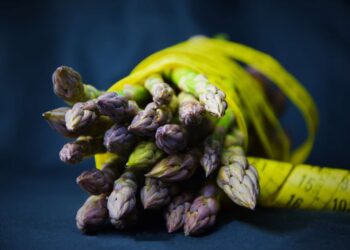New analysis reveals how Staphylococcus aureus acquires mutations that allow it to colonize skin with eczema
Human skin is home to millions of microbes. One of them, it Staphylococcus aureus, is an opportunistic pathogen that can invade patches of skin affected by eczema, also known as atopic dermatitis. In a new study, researchers from MIT and other institutions have found that this microbe can evolve rapidly within an individual person’s microbiome. They found that in people with eczema, the S aureus tends to evolve into a variant with a mutation in a specific gene that helps it grow faster on the skin. With this study, for the first time, scientists have directly observed this type of rapid evolution in a microbe associated with a complex skin disorder. The findings could also help researchers to develop potential treatments to relieve eczema symptomstargeting variants of S aureus who have this type of mutation and who tend to worsen their symptoms. “This is the first study showing that Staph aureus genotypes change in people with atopic dermatitis,” says Tami Lieberman, a fellow at the Institute for Medical Engineering and Science at MIT. “To my knowledge, this is the most direct evidence of the adaptive evolution of the skin microbiome.”
The bacterial adaptation
It is estimated that between 30 and 60% of people host it S aureus in the nostrils, where it is usually harmless. In people with eczema, which affects about 10 million children and 16 million adults in the United States, S. aureus often spreads in patches of eczema and infects the skin. “When there’s a break in the skin, Staph aureus can find a niche to grow and replicate,” Lieberman explains. “Bacteria are thought to contribute to the disease by secreting toxins and recruiting immune cells, and this immune reaction further damages the skin barrier.” Lieberman says. The researchers therefore recruited patients aged between 5 and 15 who were being treated for moderate to severe eczema. They took samples of microbes on their skin once a month for three months and then again at nine months. Samples were taken from the back of the knees and inner elbows (the sites most commonly affected by eczema), the forearms, which are usually unaffected, and the nostrils. The cells of S aureus from each sampling site sThey were cultured separately to create up to 10 colonies from each sample; once the larger colonies were formed, the researchers they sequenced the genomes of the cells. In this way they are obtained almost 1,500 unique colonieswhich allowed the researchers to observe the evolution of bacterial cells in much more detail than was previously possible. Thanks to this technique, the researchers found that most patients maintained a single lineage of S. aureus: it was very rare that a new strain arrived from the environment or from another person and replaced the strain of S. aureus existing. However, many mutations and evolutions occurred within each lineage during the nine months of the study. “Despite the stability at the lineage level, we see a lot of dynamics at the whole genome level, where new mutations are constantly arising in these bacteria and then spreading throughout the whole organism,” explains Lieberman. Many of these mutations have arisen in a gene called capDwhich encodes an enzyme needed to synthesize the capsular polysaccharide, a coating that protects it S aureus by recognition by immune cells. The researchers found that in two of the six patients who underwent deep sampling, cells with mutations capD have taken over the entire population of the skin microbiome S aureus. Other patients were colonized with strains initially lacking a functional copy of the capD, for a total of 22% of patients without capD at the end of the study. In one patient, four different capD mutations emerged independently in different samples of S. aureus, before one of these variants became dominant and spread throughout the entire microbiome.
Targeted treatment
In tests conducted on bacterial cells growing in the laboratory, the researchers demonstrated that the mutations of the capD they allowed the S aureus to grow faster than strains of S aureus with a gene capD normal. Synthesizing the capsular polysaccharide requires a lot of energy, so when cells don’t have to produce it, they have more fuel to fuel their own growth. The researchers also speculate that the loss of the capsule may allow microbes to adhere better to the skin because the proteins that allow them to adhere to the skin are more exposed. The researchers also analyzed nearly 300 bacterial genomes isolated from people with and without eczema and found that people with eczema were much more likely to have S. aureus variants that couldn’t produce the capsular polysaccharide than people without eczema. Eczema is usually treated with moisturizers or topical steroids, and doctors may prescribe antibiotics as well if the skin becomes infected. The researchers hope their findings could lead to the development of treatments that reduce eczema symptoms by targeting S. aureus variants with mutations in the capsular polysaccharide. Lieberman’s lab is now working on developing probiotics that could be used to target strains of S aureus capsule negative. His laboratory is also studying whether the strains of S aureus with mutations capD they are more likely to spread to other family members of an eczema patient.

We all need a three day weekend, science says so





